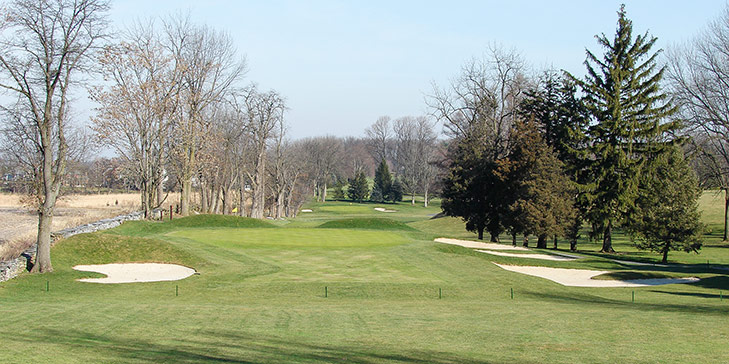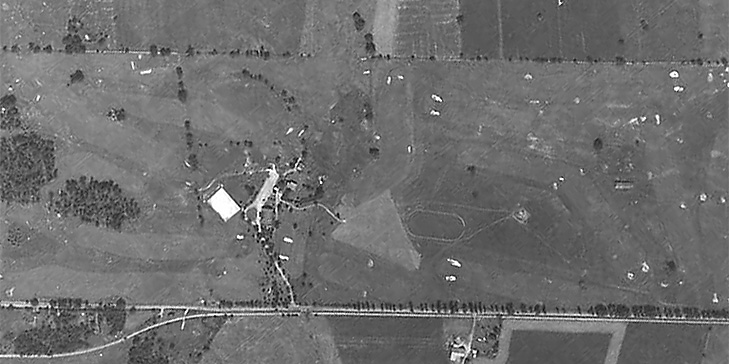Forse design will lead a renovation project at the 18-hole course at the Lebanon Country Club in Lebanon, Pennsylvania, to begin this summer.
Architect Jim Nagle spoke to GCA about the project and working on a course designed by Alexander Findlay, an architect he holds in high esteem.
“We’re very confident in this project,” said Nagle. “The club has decided to do the work over the summer, which is not necessarily the norm here in the north-east, but we think this will serve the members better in the end, because we’ll be able to wrap things up before winter will even try to settle in and they’ll have their course back to them by Spring 2015.”
The upcoming project will have a focus on bunkering and safety, and Philadelphia’s Mottin Golf has been appointed as the contractor for the project, fresh off the back of recent work at Merrion, Pine Valley and a number of other prominent clubs in the Philadelphia area.

Part of the project will address some safety concerns on the course’s eighth hole.
“At Forse Design, whenever we look at any kind of masterplan redevelopment, safety is always at the top of the list,” explained Nagle. “Whether it’s parallel holes hitting into each other or a misaligned tee, safety is always the first thing. The eighth hole at Lebanon Country Club is parallel to Oak Street. The tee is elevated and the road sits lower than that tee, so oftentimes we have a pull or a hook that’s headed for that road.
“This is a road where a lot of development has taken place and there’s a lot more traffic than previously. We’re trying to impart some Alexander Findlay design principles in terms of fairway bunkering and how the fairway bunkers would look and shift the centreline of this hole further to the right. This involves shifting the fairway but also adding some very deep and menacing bunkers to the left hand side to really deter play from that left side and Oak Street.”
Safety work is also being carried out on the parallel sixteenth and seventeenth holes.
“You have an elevated tee on the sixteenth hole and a dogleg left on the seventeenth, but a lot of play is on the right hand side as there is a row of trees on the inside,” Nagle said. “The trees between sixteen and seventeen are all Spruce trees that are dying. All of these trees are being removed, and we have found that sometimes it is better if you can actually see adjoining golf holes, as opposed to them being hidden. We’re removing all trees between these two holes and putting down a large fairway bunker and mounding complex that almost acts as double duty bunkers between the two holes.
“Alexander Findlay oftentimes would have large fairway bunkers with irregular mounds directly adjacent to the bunkers or built within the bunkers themselves, and that’s what we’re introducing there. It’s some reinstatement of Findlay design elements while also solving some safety problems.”
A major part of the project involves the bunkers, a feature of the course that was highlighted by the club’s membership following a recent survey. Nagle confirmed that while the total number of bunkers will be reduced, but the overall surface area of the course’s bunkers will increase.
“The back nine at Lebanon Country Club has bunkering that is much more reminiscent of Alexander Findlay from what we have seen on projects we have restored or have studied. There are some elements on the front nine but the bunkers on the front nine are much smaller in scale and do not have magnitude of what he did on the back nine. An old aerial photo from 1937 (see below) does reveal some larger bunkers on the front nine that have since been removed or reduced. We’re going to be restoring some of those bunkers and at the same time adding others to marry the two nines and make them a better cohesive unit.”

Lebanon Country Club is one of a number of courses designed by Alexander Findlay in the region, with the courses at Reading Country Club, Tavistock Country Club and Llanerch Country all bearing the Findlay name.
“Alexander Findlay is in many ways a forgotten architect within the history of American golf architecture,” explained Nagle. “He was here in the late 1880’s and doing everything he could to promote the game of golf. But so many of Findlay’s golf courses are gone because he was building nine hole courses in city centres or on the outskirts of urban areas. Many of these clubs moved to new land or the original course’s were incorporated into 18-hole courses at a different time.”
“Lebanon Country Club and other courses we’ve worked on are great indicators of how good this guy was, but he’s not held in the same regard as Ross and Tillinghast and Mackenzie and Flynn,” added Nagle. “But in his own right, Findlay was a very good, capable architect and I think one that deserves to have a little more recognition here in the States.”